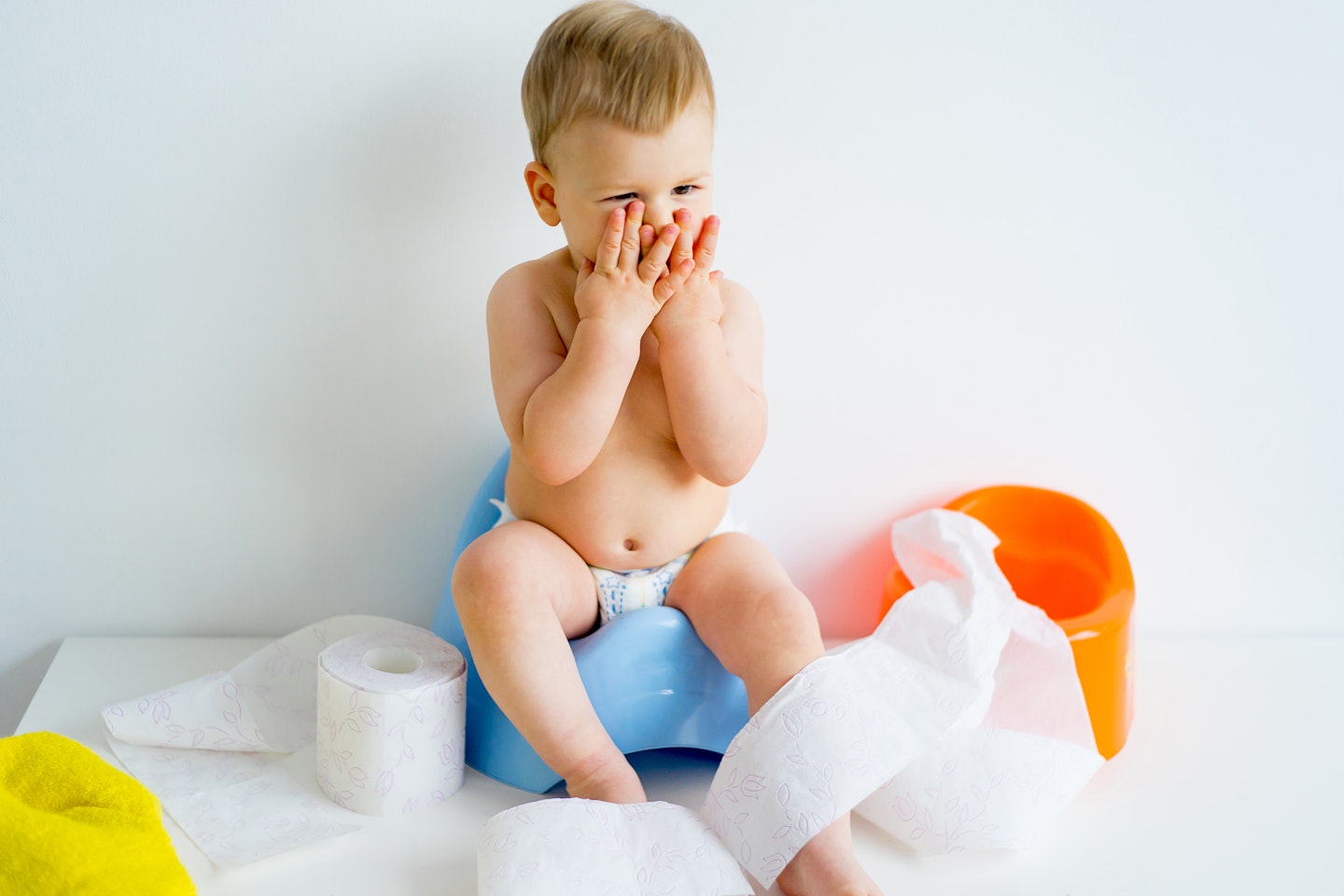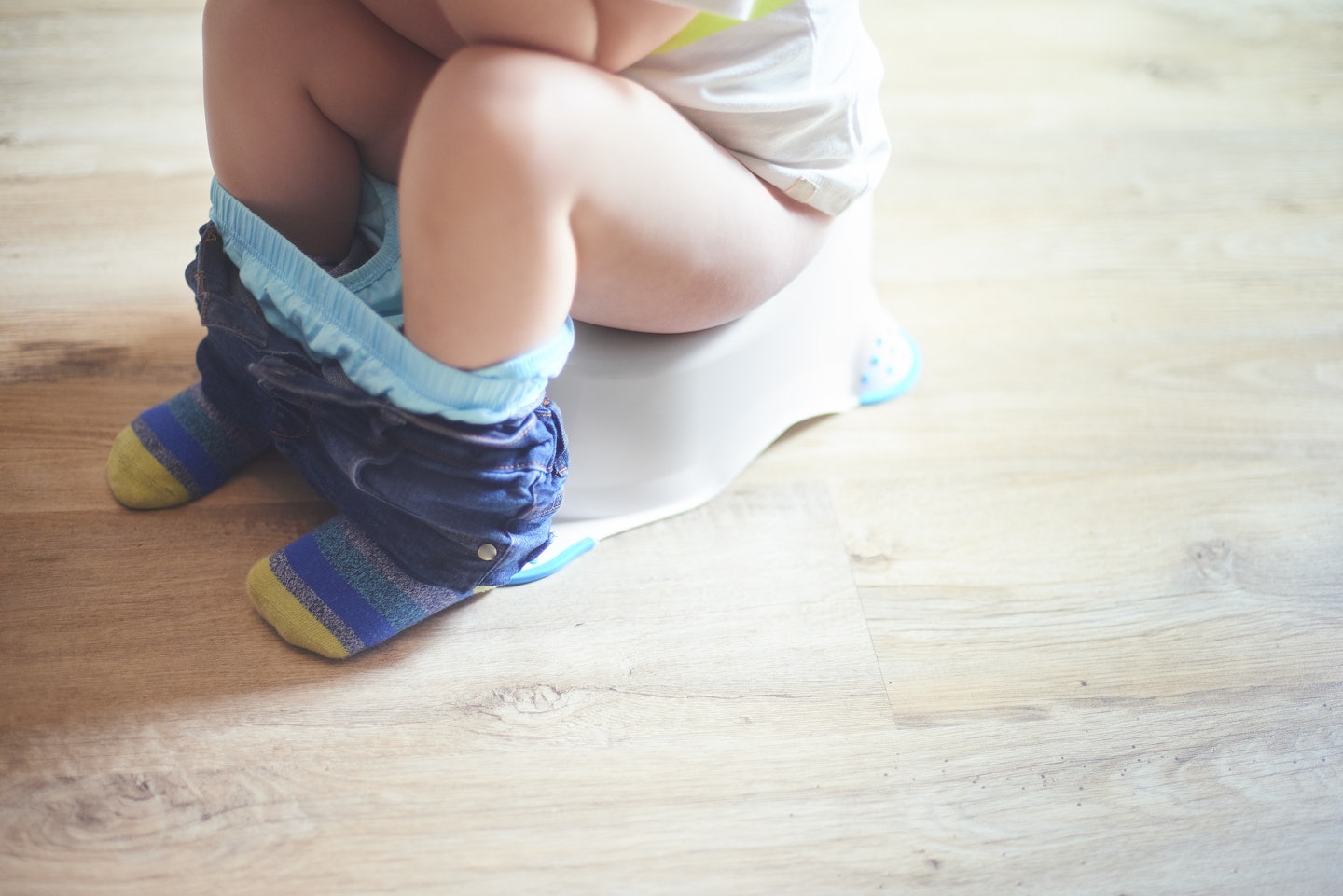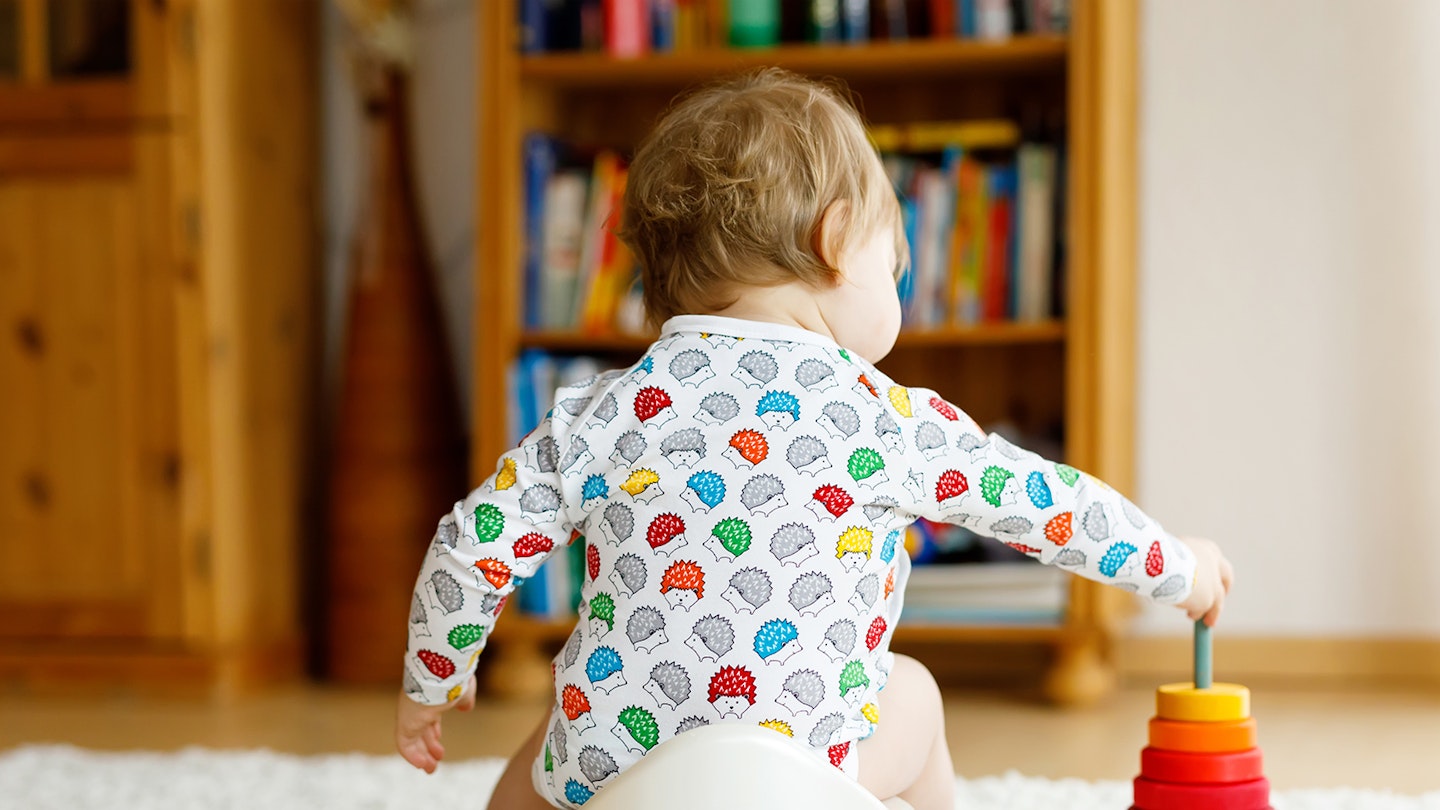Learning how to potty train boys can be a stressful experience. As well as getting them to sit down on their training potty, you then need to teach them how to pee standing up too, so it can take them a good few months to master the potty.
While some boys might start showing the signs they're ready for potty training by the 18-month mark, some may not be ready until they're around 3 or 4 years old. Remember, every child is different and on average, they tend to start later than girls.
To help make your whole experience a lot easier and much less stressful, we've put together everything you need to know about how to potty train boys from when you should start to the equipment that might help.
When to start potty training boys

On average, boys are ready to start sitting on their potty a few months later than girls start potty training. Their communication skills are less developed at the same age and they’re more active, making them less likely to stop and take time out to use a potty. But all children are different and those with older siblings may be ready as early as 18 months, while others may be as late as four years.
From around age two, start looking for the signs that he’s ready to start potty training:
• Can he tell you his nappy’s wet?
• Is he interested in toilets, potties and wees?
• Can he follow simple instructions?
• Will he sit quietly in the same place for two minutes?
• Can he pull his trousers up and down?
• Does he exhibit good bladder control and go for two hours without weeing?
If the answer to any of these is ‘no’, it’s probably better to wait a little longer. If the answers are all ‘yes’, then he’s ready.
Potty training is a new experience for little boys and it can be scary. Getting the timing right is crucial. Avoid potty training if there’s something else big going on in his life, like a new baby, new nursery or house move. Many parents also wait till the summer to train boys as, if you have a private garden, they can run around naked and practise their aim against an unsuspecting tree marked with tape.
How to potty train a boy
Let him watch and learn
Toddlers learn by imitation so instigate an open-door policy and encourage him to watch his dad or older brothers going to the toilet. However reluctant Dad might be, encourage him to start talking about weeing and pooing with his son, and you can explain that boys use the toilet differently to girls. Swap nappies for potty training pants or pull-ups and encourage him to take them on and off himself when he’s getting dressed.
Let him choose some cool underwear for motivation
If he seems to be taking all this in his stride, it’s time for a special shopping trip. He needs to feel like a big boy so let him choose whichever pants he wants, whether it’s boxers, briefs, ones with trains on or his favourite cartoon character.
It might be nice to make this a boys-only affair with Daddy or close male family member taking him out for some special shopping time. No matter who takes him, make sure he knows that this is a big deal and talk about the outing before it actually happens.
He needs to feel like a big boy so let him choose whichever pants he wants, whether it’s boxers, briefs, ones with trains on or his favourite cartoon character. That way, he’ll want to keep them as clean as possible. He might end up soiling several in the first few days so, to avoid running out, buy between seven and ten pairs to start off with.

Get to the potty ahead of time
During the early stages of potty training, expect to take him to the bathroom or the potty every hour or so and encourage him to go, rather than waiting for him to tell you. Look out for signs he needs a wee or a poo like hopping, holding his bottom or concentrating on something that’s not immediately apparent. At the beginning, teach him to sit on the potty for both wees and poos, so he can learn the basics without getting distracted with the fun bit of spraying and perfecting his aim. Encourage him to push his penis right down so it’s aimed in the right direction. If sitting on the toilet for a just in case visit, you shouldn't make them sit for longer than 2-3 minutes if they're showing no signs of needing to go.
Make sure you have several potties at hand – a minimum of one on each floor of your house so you aren’t running around trying to find them in an emergency. Eventually, he’ll be able to go and get the potty and use it for himself, another reason it’s handy to have them within easy reach.
Of course, accidents are inevitable but don’t make a fuss. Calmly clean everything up and remind him to tell you when he needs the toilet next time. To reward successes, start a “treat bag” and fill it with cheap presents like miniature cars, Paw Patrol stickers and bubbles (if you can avoid sweets). When he does go to the toilet and washes his hands, let him choose something from the bag to keep.
Make aiming into a game
Once he’s mastered using the potty and toilet, you can move on to standing up. Help him to practise his aim by putting Cheerios in the toilet bowl and getting him to try and “sink” them, or get him to cut out toilet paper shapes and practise firing at them. If your little boy isn't circumcised, make sure he keeps his foreskin retracted when he pees – it can cause wee to spray out, making a mess, as well as trapping urine, leading to infection.
Buy the right equipment
Buy a potty without a urine guard (or if it has one, make sure it can be removed). They protect your bathroom from splashes but they can scrape the penis when he sits down and pain isn’t something that you want associated with toilet training.
If he’s struggling to pee standing up, get him his very own training urinal. This can be mounted on a wall or left freestanding.
Reading a book on the toilet is a great way to keep little boys entertained and it will help him to relax. Pirate Pete’s Potty Bookuses bright fun pictures and a “cheer” sound effect as it takes children through the story of how Pirate Pete learns to use a potty.
Most boys aren’t tall enough to reach the toilet to pee so buy a stool that they can climb up onto. They can also use this to reach the sink for handwashing afterwards.
These antibacterial potty-training balls are a great alternative to Cheerios and create a fun point of focus for boys who need help with their aim.
As well as a potty and a training seat, invest in a travel potty that he can use when he needs to go and you’re out and about. The Pottete Max travel potty, which can easily be folded down and stored under a buggy, makes an emergency toilet break a no-hassle affair thanks to its disposable bags. As well as a potty, it doubles up as a training seat that can be folded out and fitted onto a public toilet.
Make potty training fun
Personalise the potty with stickers from his favourite TV shows.
While he’s potty-training, avoid putting him in trousers with a button or zip fly that will take time and concentration for him to undo. Loose-fitting clothes, like jogging bottoms that have an elasticated waist, are the best option.
If you have trouble getting him on the toilet, let him choose some food colouring to put in the bowl and get him to wee onto it. He’ll love watching it change colour.
Buy pants a size bigger so he can easily get them on and off.
Doing poos on the toilet might be trickier than wees. Encourage him to stay sitting by downloading a new game onto an iPad or buying him a new book that’s kept only in the bathroom for toilet times.
Reward good behaviour
As with any good behaviour, it should be rewarded, especially when learning a new skill such as using the potty. There are so many brilliant potty training reward charts to suit every tot. It's a place where you can pop a sticker on the chart every time they successfully have a pee or poo in the potty as well as rewarding hygiene like washing hands. You could even keep this as they move to using the toilet and learn to wipe and flush for themselves.
Things to consider when potty training boys
• Make sure they're drinking plenty – During the day, you should make sure your tot is drinking around a minimum of 6-8 drinks to stay hydrated.
• Start by sitting down – Although they'll one day master the stand up pee, encourage boys to sit down to wee to begin with, they may empty their bladder better by doing this.
• Give them choice – Let your child choose the potty to make potty training more exciting.
• Let people know – Make sure your close relatives or childminders know your potty training routine to make sure it's consistent if your little one is away from home.
• Constipation – Constipation can be fairly common in young children but it's important for you to know the signs. As a guide, your child should be pooing at least 4 times a week.
• Terminology – Think about what words you plan to use with your tot to guide them through the potty training phase. What will you call pee and poo? There are also a huge range of names for their penis that you need to decide on. Whatever you choose, you must stick to it otherwise it could cause a lot of confusion for them.
• Clothing – During those early weeks, you'll want to make sure you dress your son in something that is easy for him to pull down whenever he needs to go – think jogging bottoms until he's able to feel the signs he needs to go earlier.
How long does it take to potty train a boy?
Every child is so different, the time it takes for boys to master the potty can vary. The whole process of potty training can last anywhere between three and six months. As for nighttime potty training, that can take years to achieve. The most important thing to keep in mind is patience. Keep going with your potty training routine despite the accidents and before you'll know it they'll be using the toilet with confidence.
If your little boy is struggling to get the hang of things and they're aged four or above, it might be worth visiting your GP to talk through any concerns you might have.
